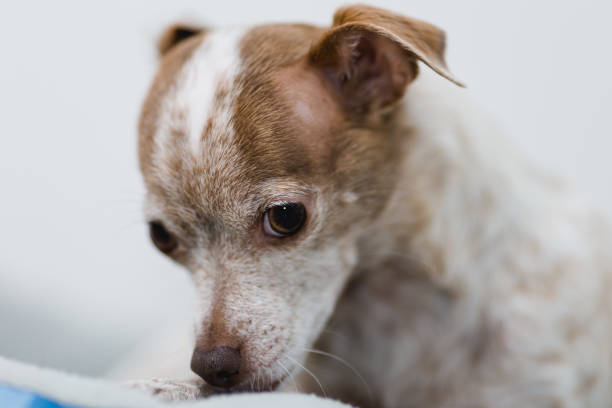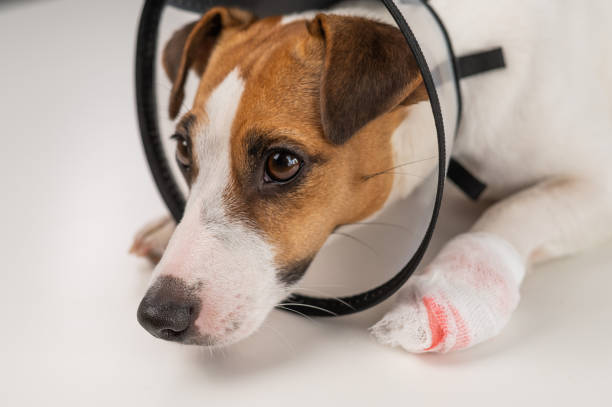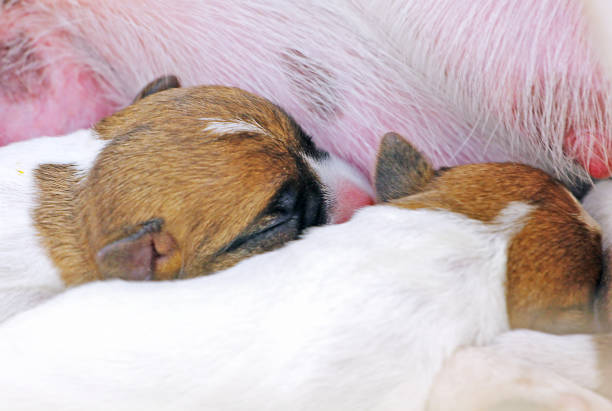Interesting Facts about Dogs with Down Syndrome
This post contains affiliate links. This means I will make a commission at no extra cost to you should you click through and make a purchase. Read the full disclosure here.
Did you know that dogs can have Down syndrome? Most humans who are born with Down syndrome have an extra copy of their 21st chromosome, but dogs with Down syndrome usually have trisomy 16, which means they have an extra copy of their 16th chromosome.
Dogs’ Down Syndrome Explained Further
If a dog has one copy of a gene in its genome, it is considered heterozygous. If that same dog has two copies of that gene, then it is homozygous.
Humans who have Down syndrome are homozygous for chromosome 21. This means they have three copies of chromosome 21, instead of two (one from each parent). Dogs can be heterozygous or homozygous for genes related to Down syndrome; here’s how The single-gene disorder Basset Hound Myopathy (BHM) causes many similarities to Down syndrome, including some physical characteristics and developmental delays, and learning disabilities.
BHM is caused by an autosomal recessive gene. Because dogs inherit two copies of every autosomal pair, a dog must inherit defective genes on both chromosomes 15 and 16 in order to develop BHM—which makes BHM caused by one copy of the mutated gene dominant over normal versions!
While these dogs may be cute, there’s no evidence that they are any different from other dogs in terms of temperament or trainability. Here are 5 facts about these adorable pooches.
1) Characteristics
While every dog with Down syndrome is different, they all share similar characteristics. Like all dogs, dogs with Down syndrome are characterized by intelligence and playfulness. They tend to be a bit neater in their eating habits and waste less than non-Down dogs.
2) How are they like humans?
As I mentioned before, Down syndrome is a genetic disorder caused by an extra chromosome. Humans and dogs both have chromosomes, which carry genes that determine characteristics such as hair color, body size, and eye color. Some of these characteristics are innate and others are learned through environmental factors.
The similarities between humans and dogs often help scientists learn more about how Down syndrome affects humans in specific ways. People with Down syndrome frequently have better hearing than most people, just like dogs do.
3) Where do they fit in with other breeds?
There are several breeds of dogs that have been recognized by kennel clubs as having a higher rate of occurrence for Down syndrome than others. Interestingly, these dogs usually have physical characteristics that correspond to their genetic background.
For example, Bulldogs tend to have lower-set ears and wrinkled faces, which are similar features to those found in individuals diagnosed with Down syndrome. Cocker Spaniels and Basenjis also commonly experience Down syndrome in their litters.
4) Training and lifestyle
Some dogs are born without a sense of smell, but there’s not much evidence to suggest that these smell-less pups really suffer as a result. Some dogs can be trained to sniff out specific scents by pairing certain scents with rewards. In fact, many police departments use dogs for sniffing out drugs, bombs, and other contraband.
5) What’s their life expectancy?
Down syndrome dogs have a life expectancy that’s in line with other dogs of their size. Many smaller breeds of dogs live longer than larger ones, and there’s no reason to think that a down syndrome dog would live any longer or shorter than any other type of dog.









![How Much Exercise Does A Jack Russell Terrier Need? [Complete guide for all life stages] How Much Exercise Does A Jack Russell Terrier Need? [Complete guide for all life stages]](https://jackrusselterrier.net/wp-content/uploads/2023/03/istockphoto-1149531679-612x612-1.jpg)
![Caring For Jack Russell Terrier Puppies [From birth to weaning] Jack Russell Terrier Puppies](https://jackrusselterrier.net/wp-content/uploads/2023/03/istockphoto-1218513492-612x612-1.jpg)


